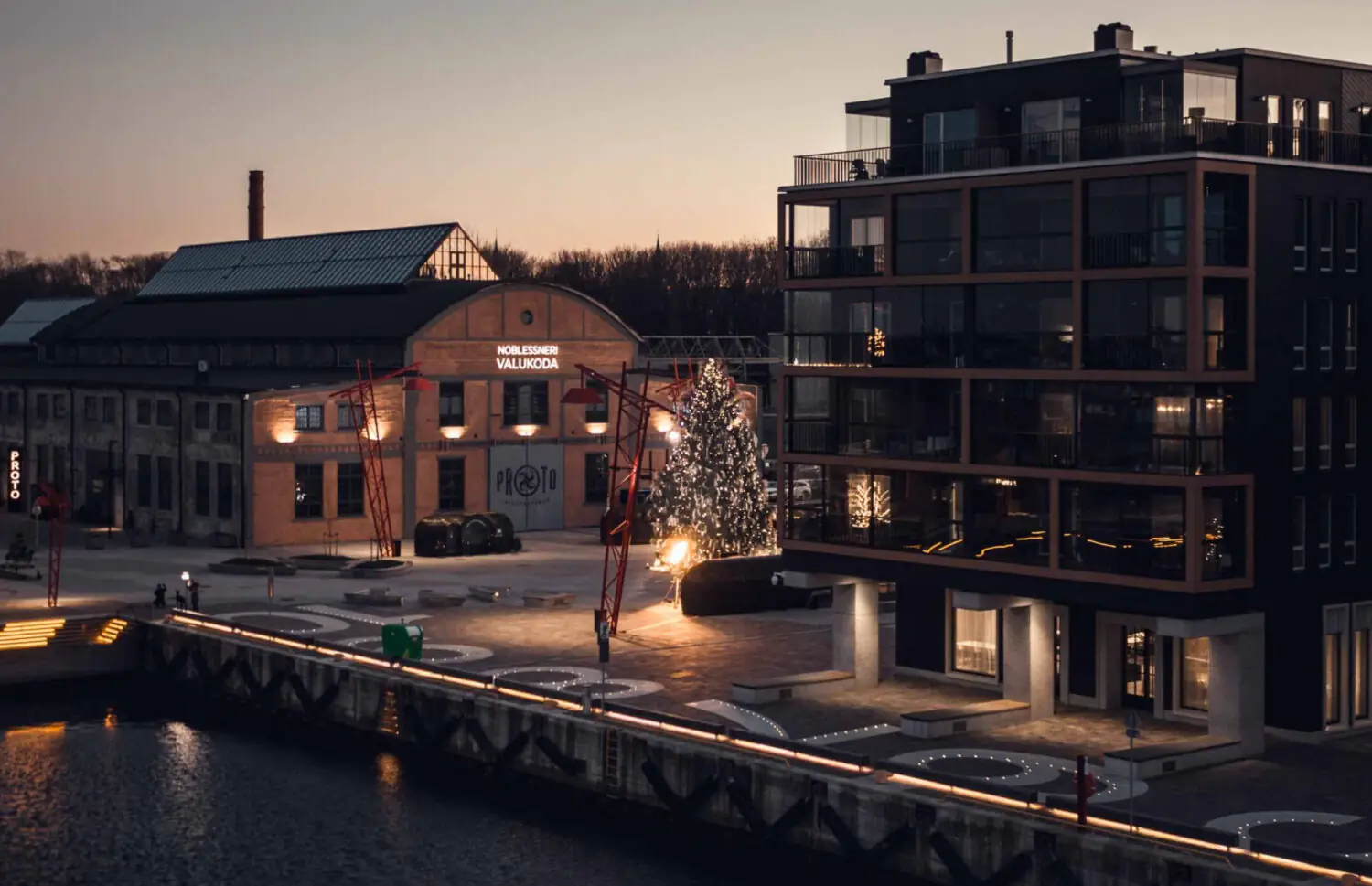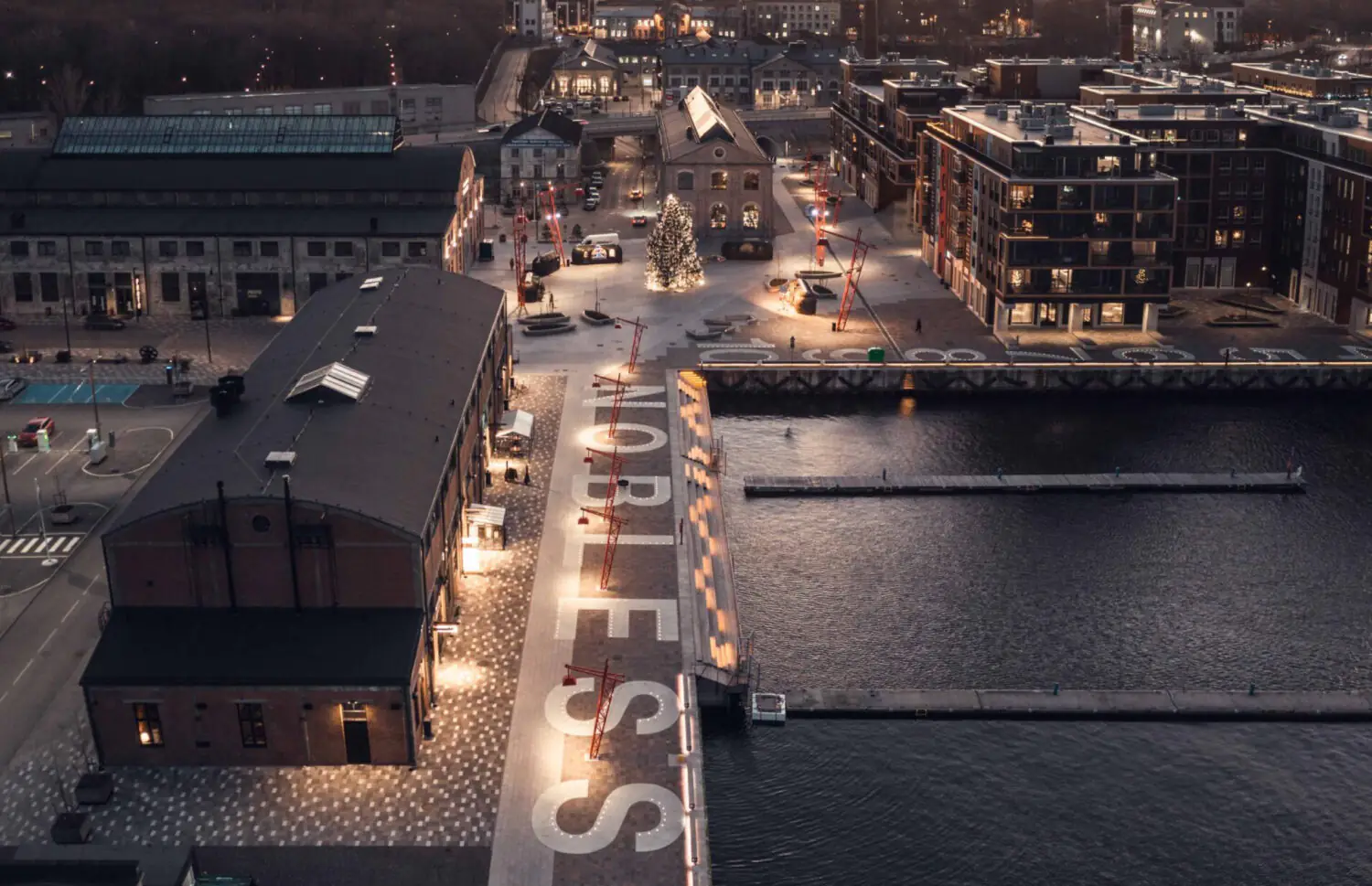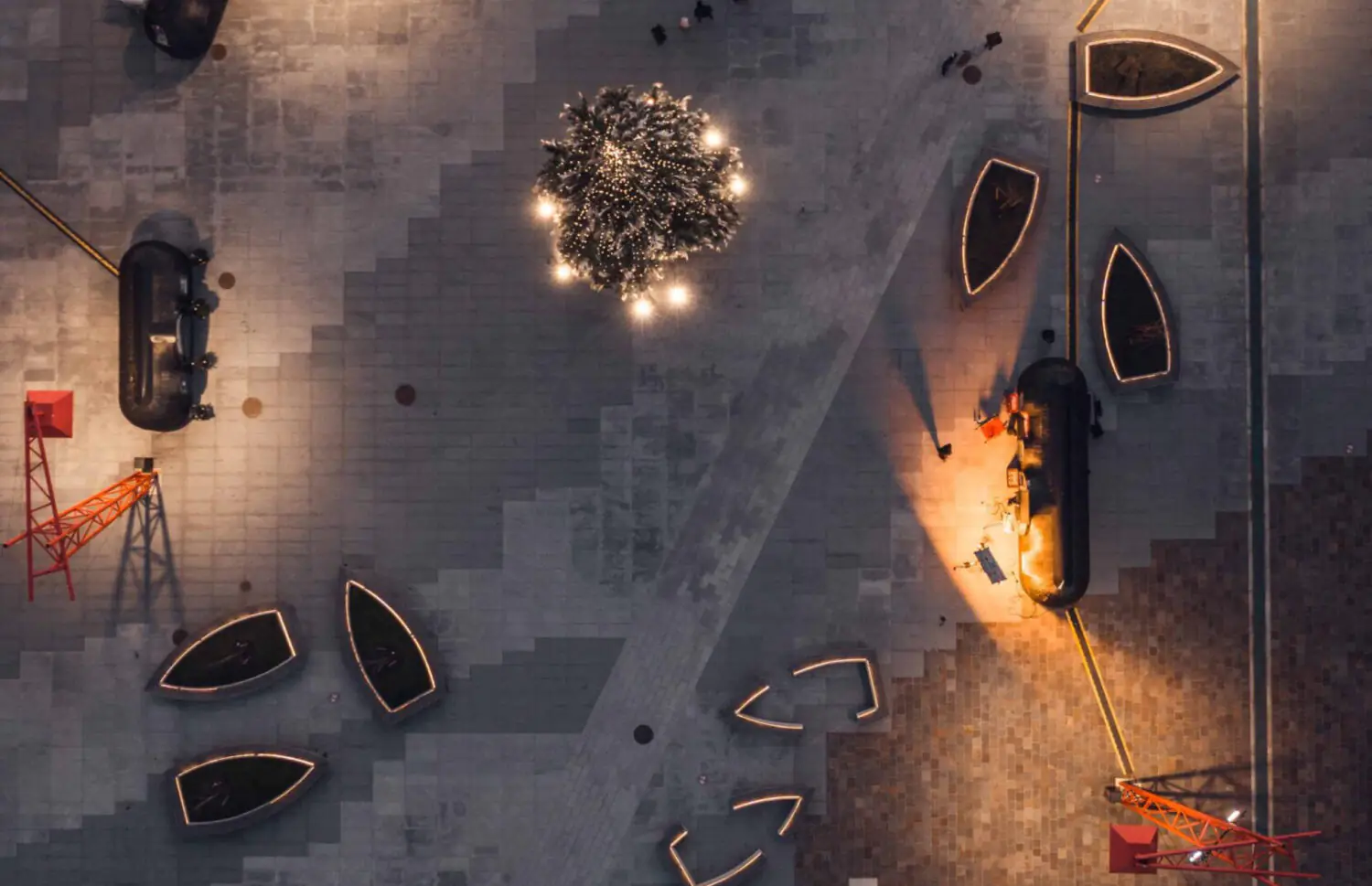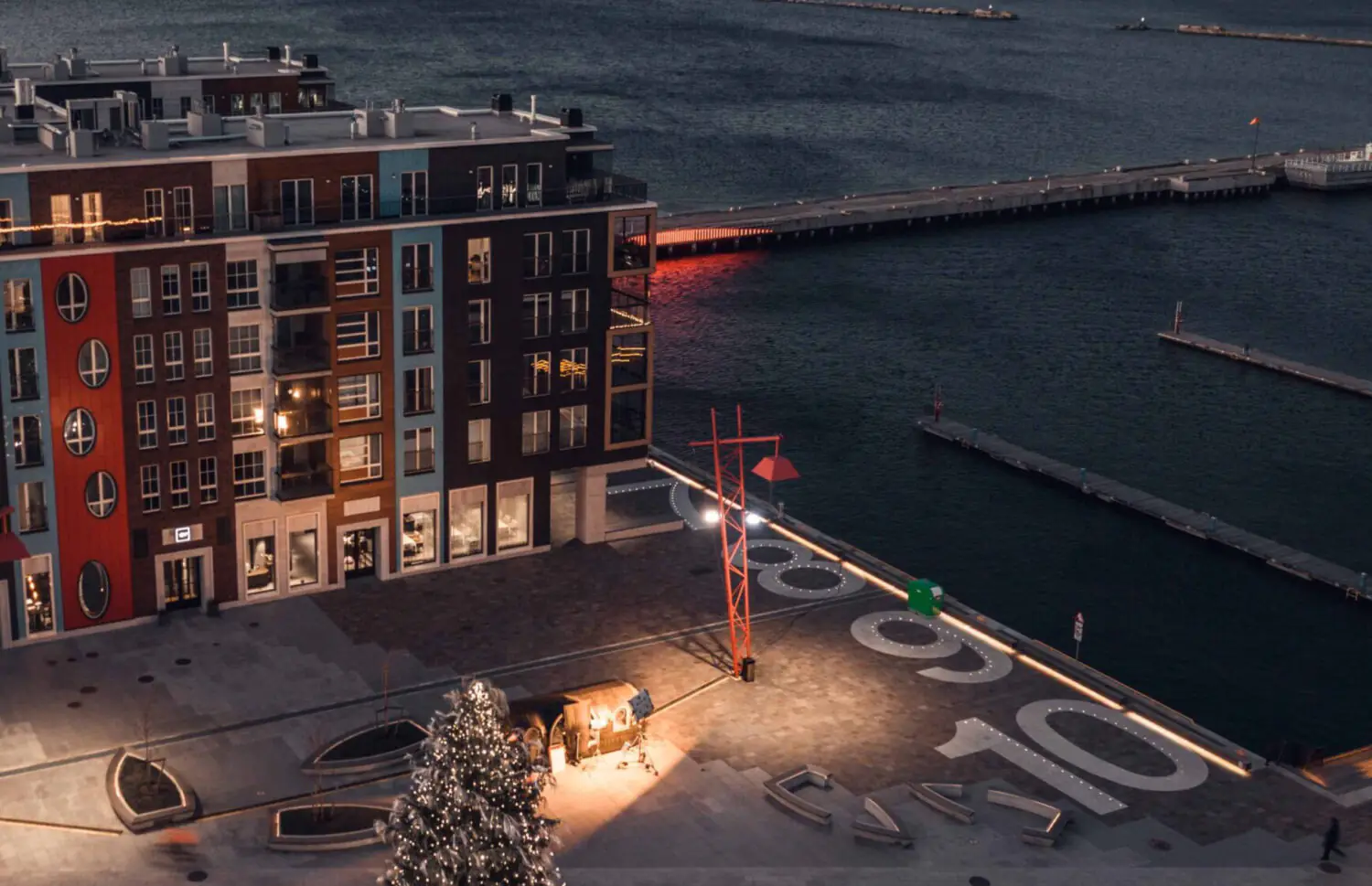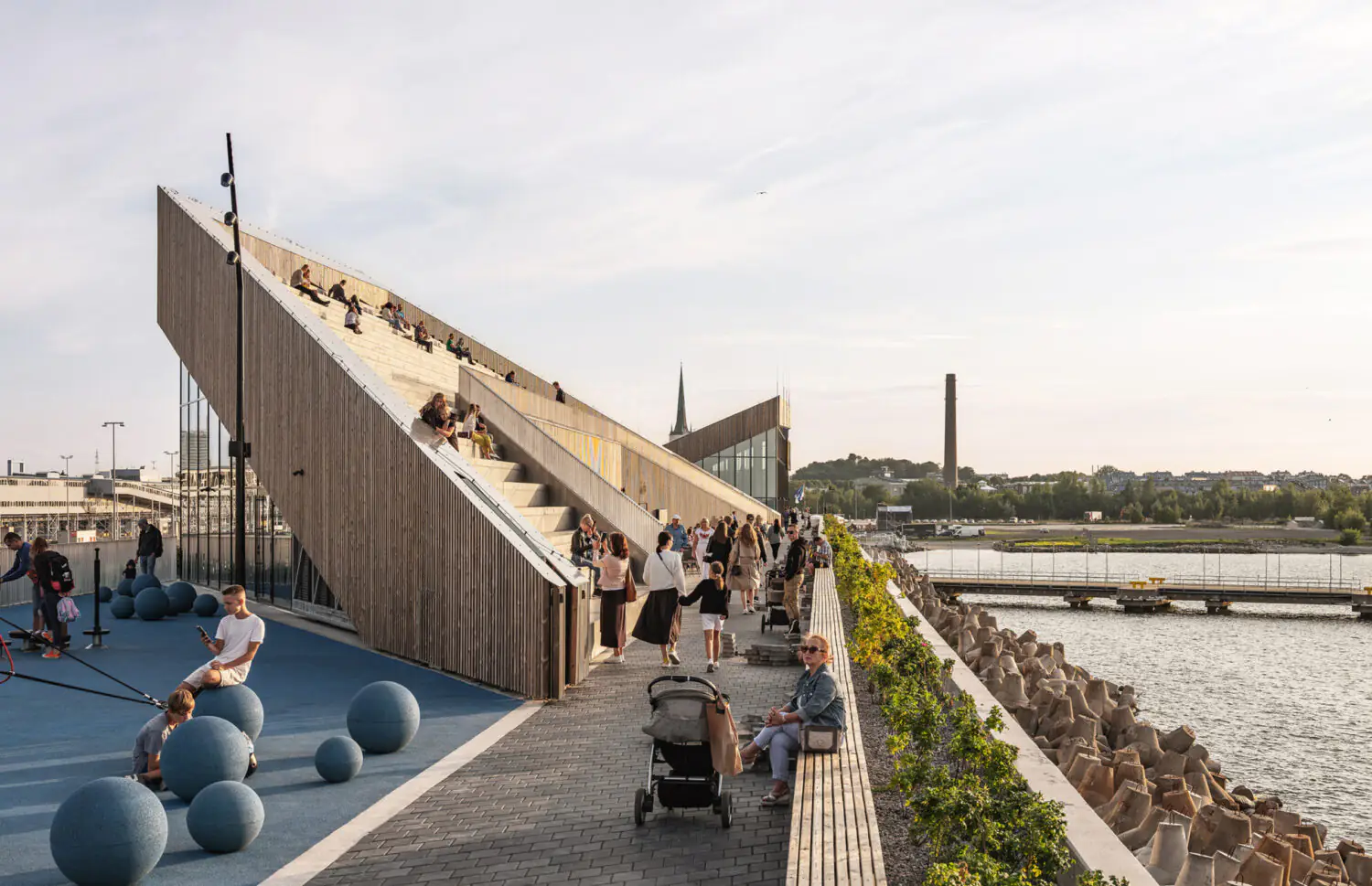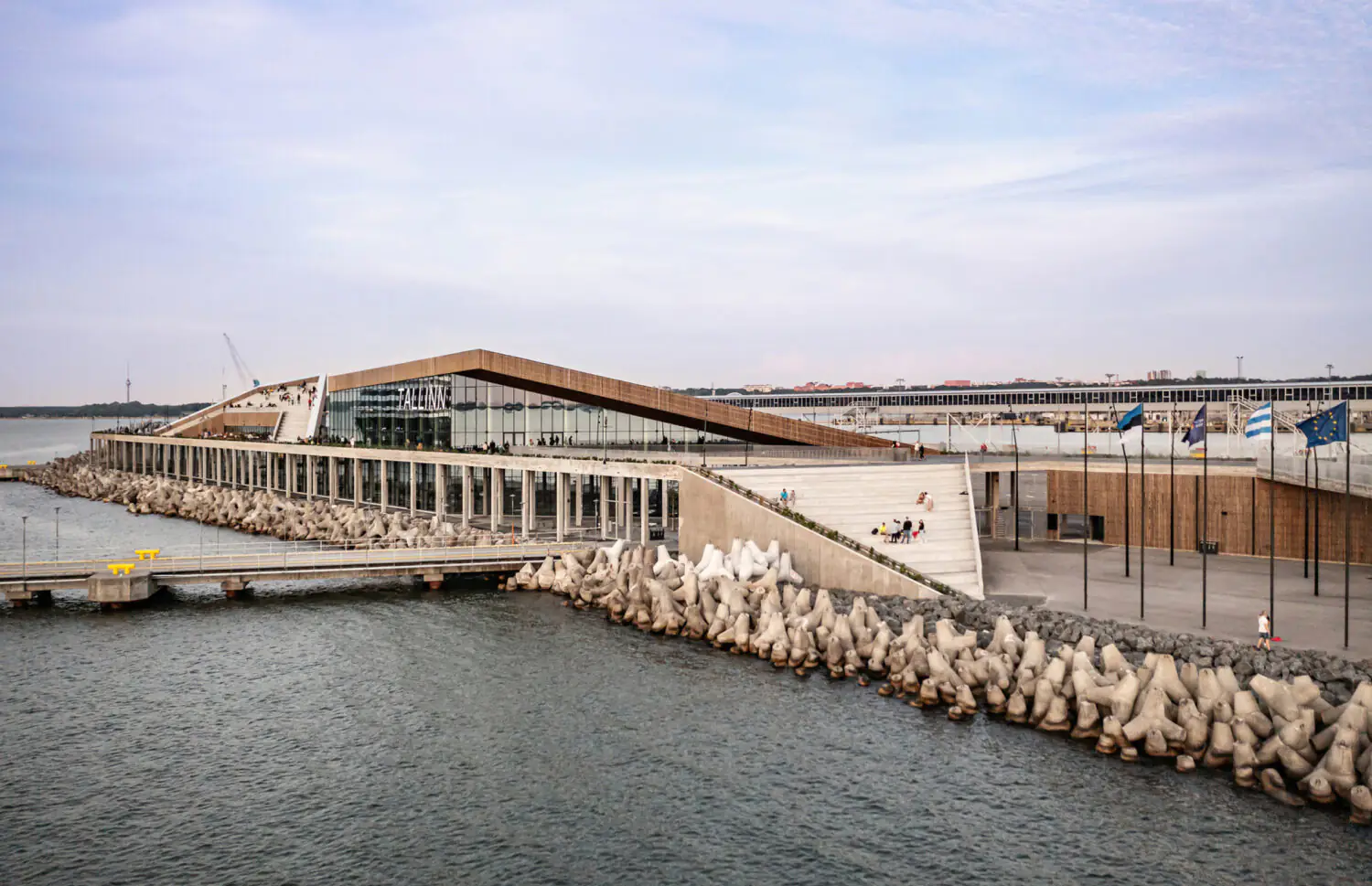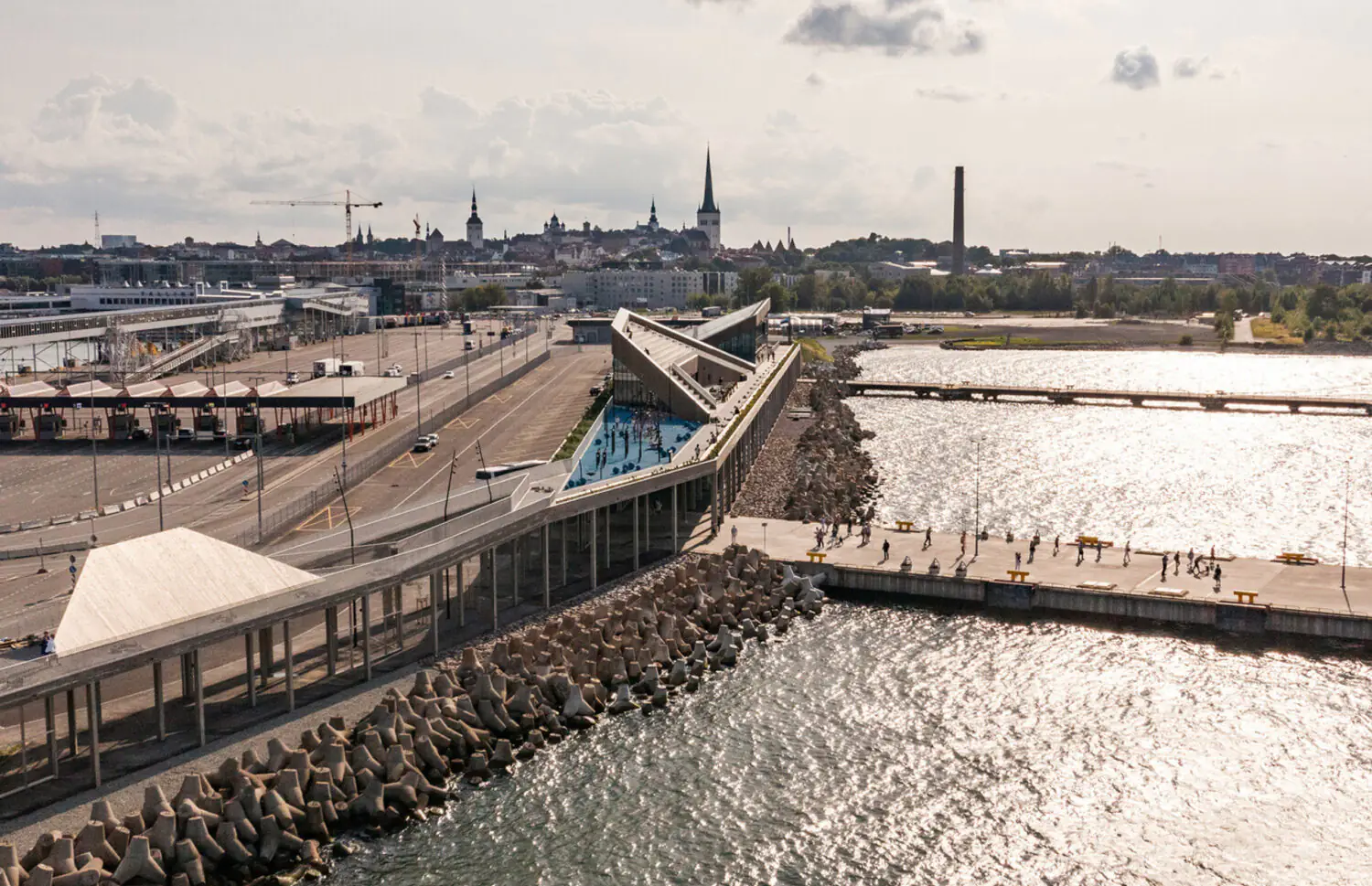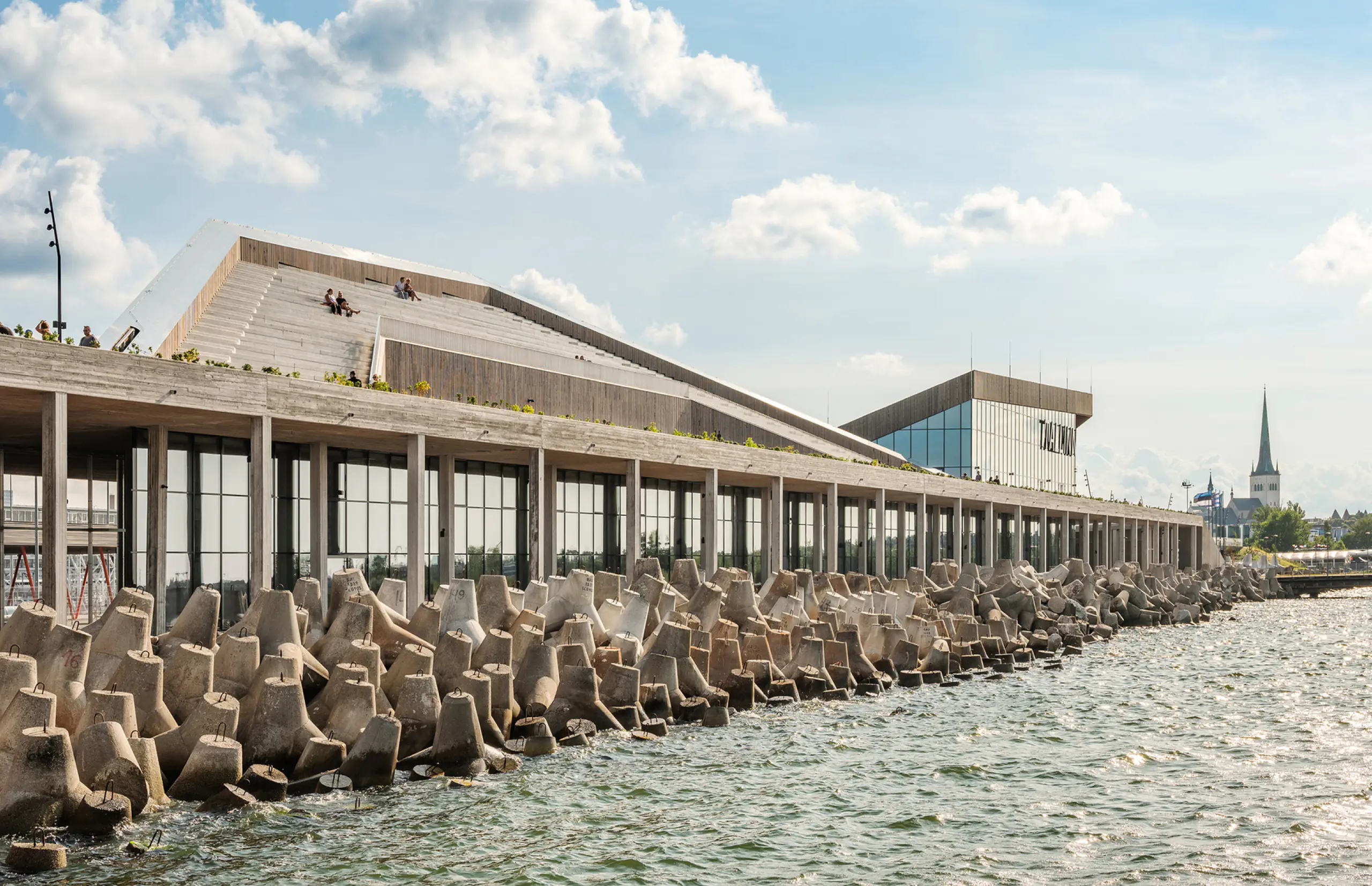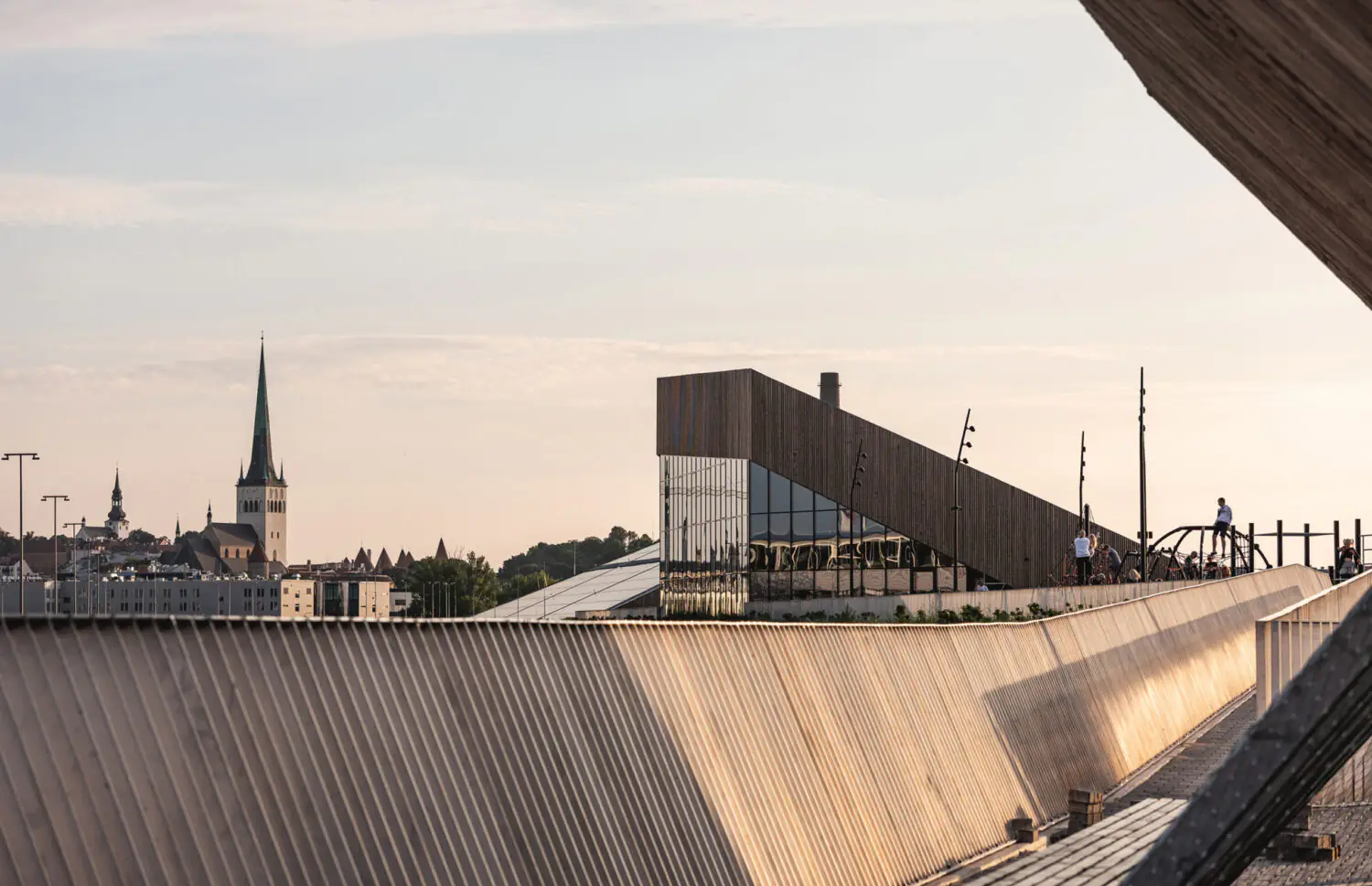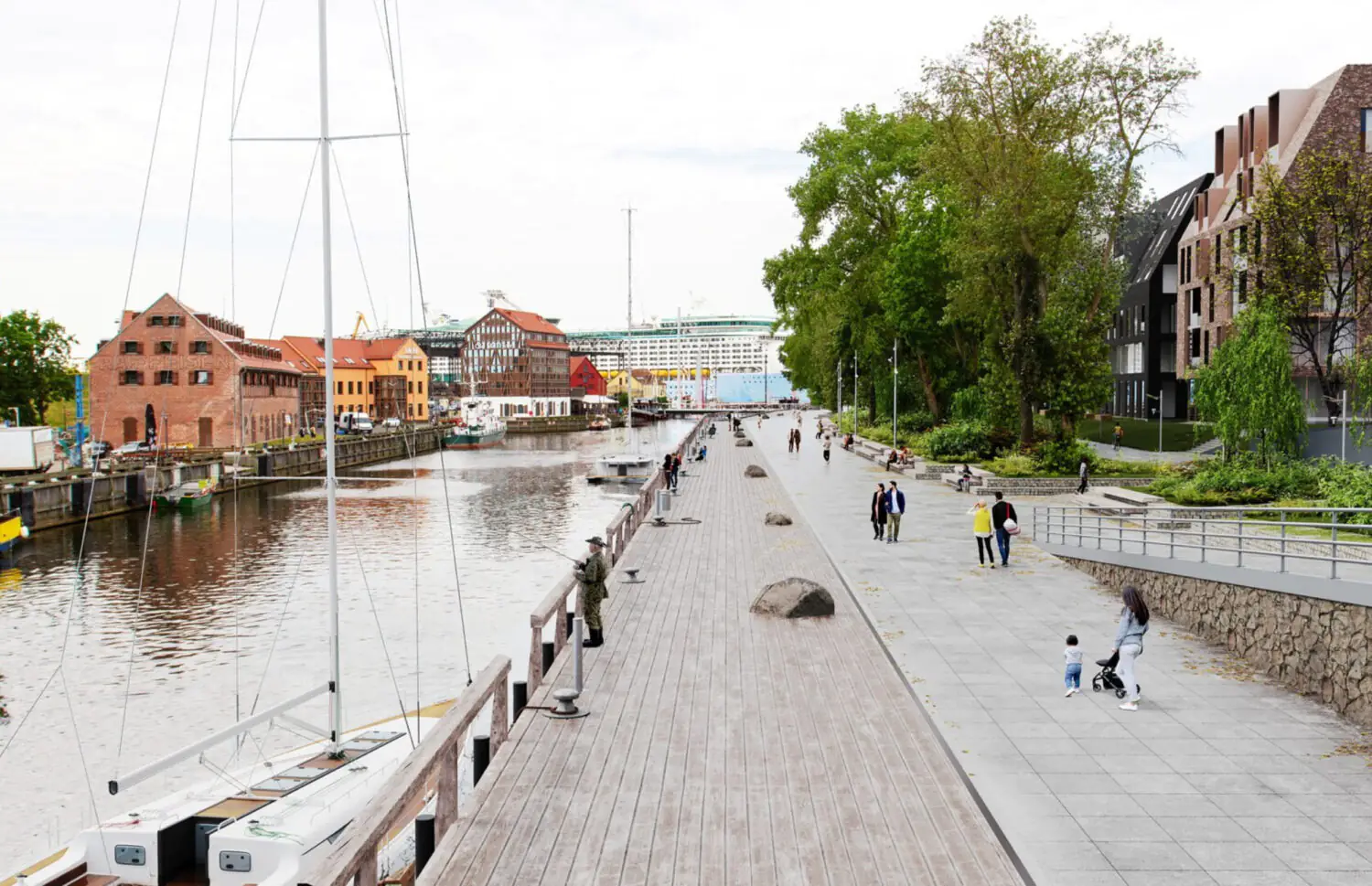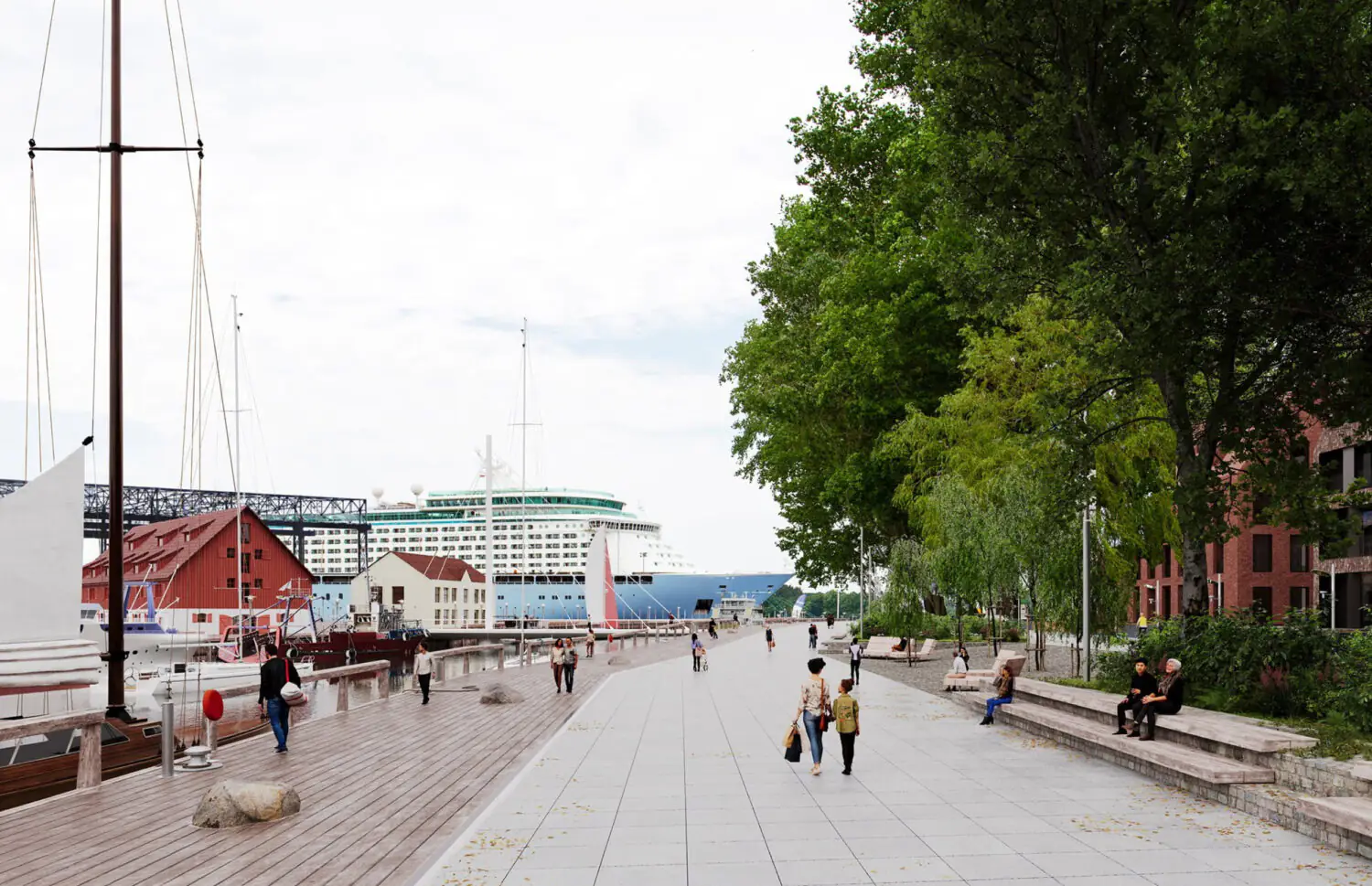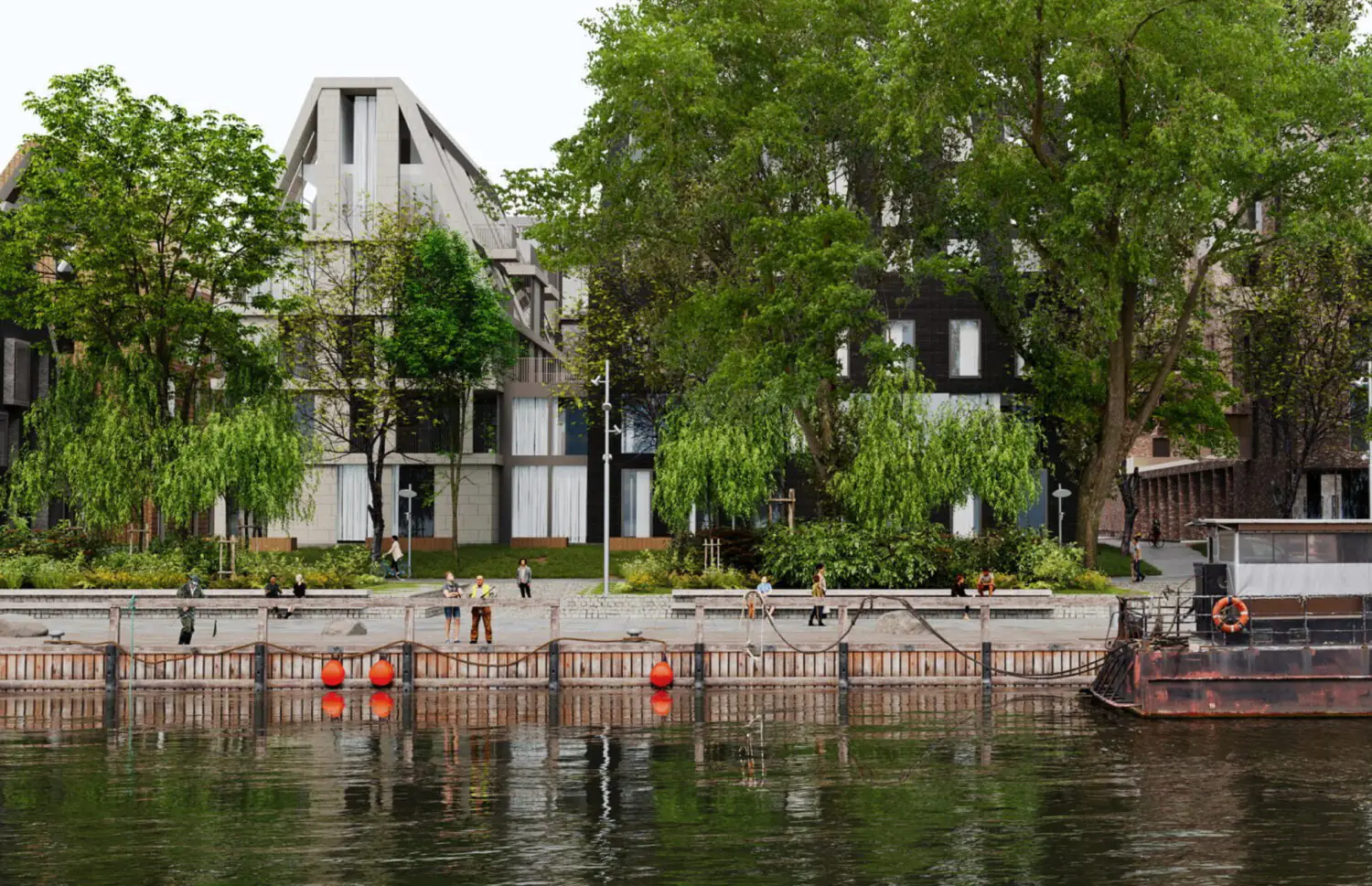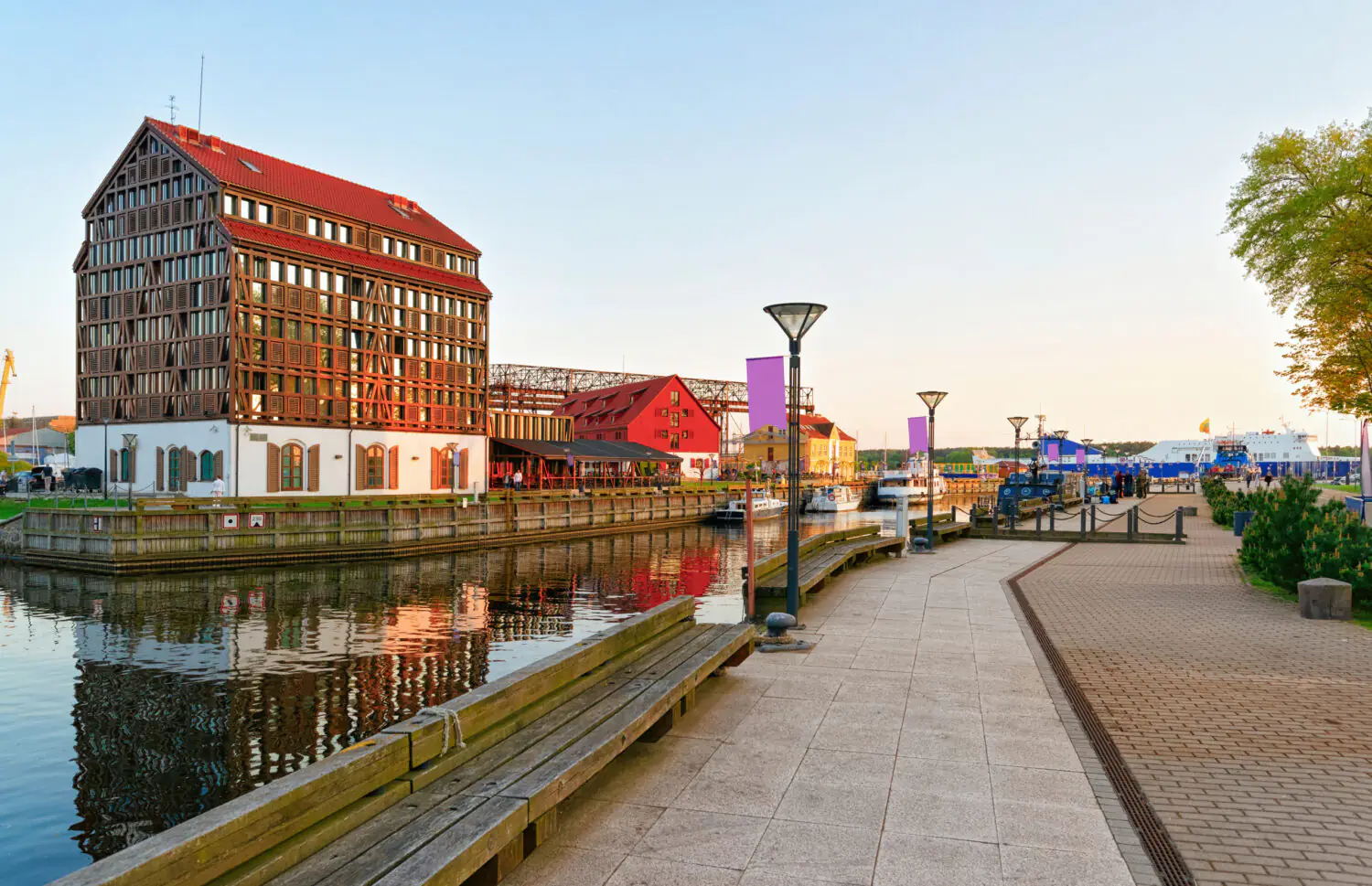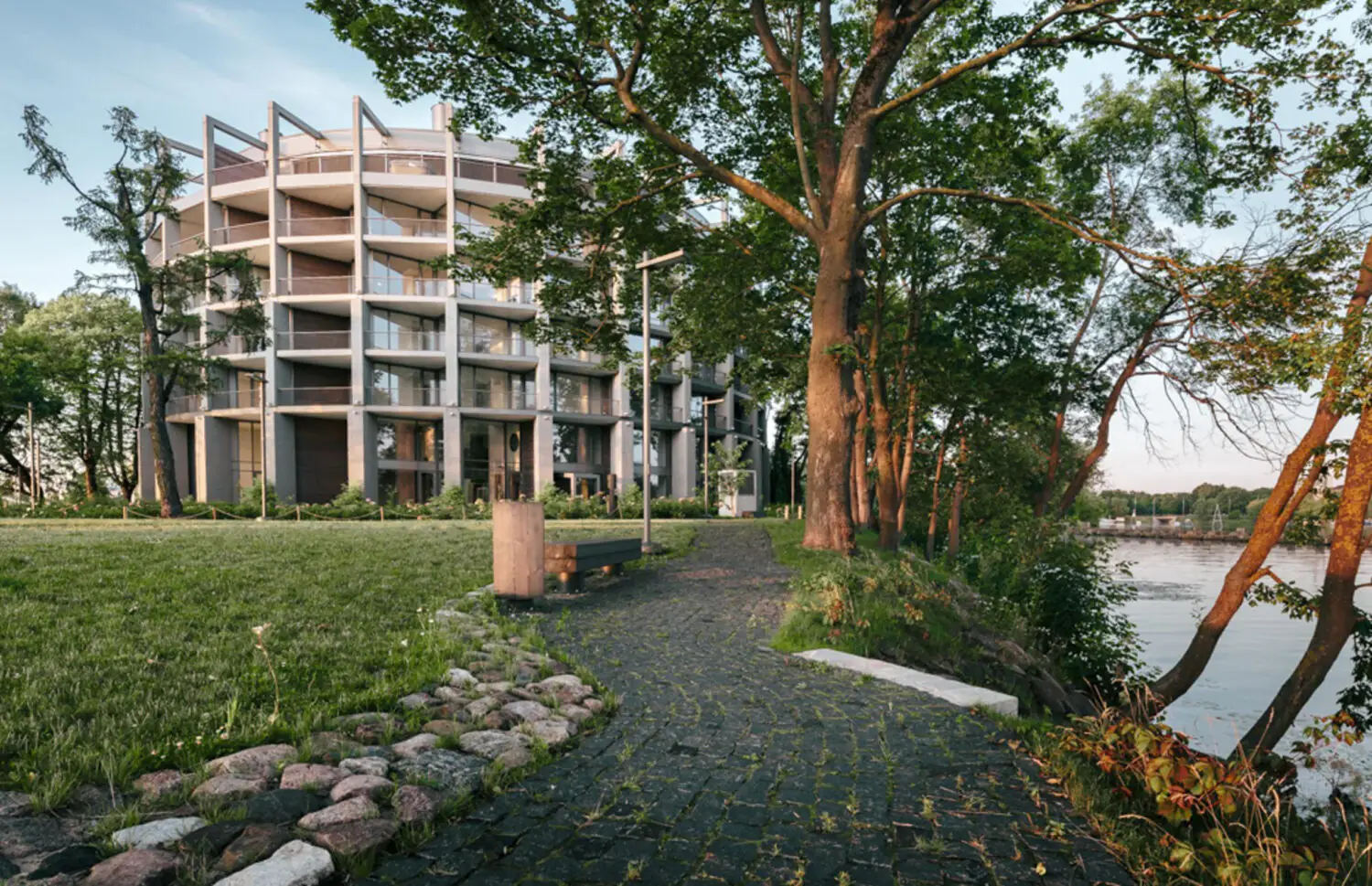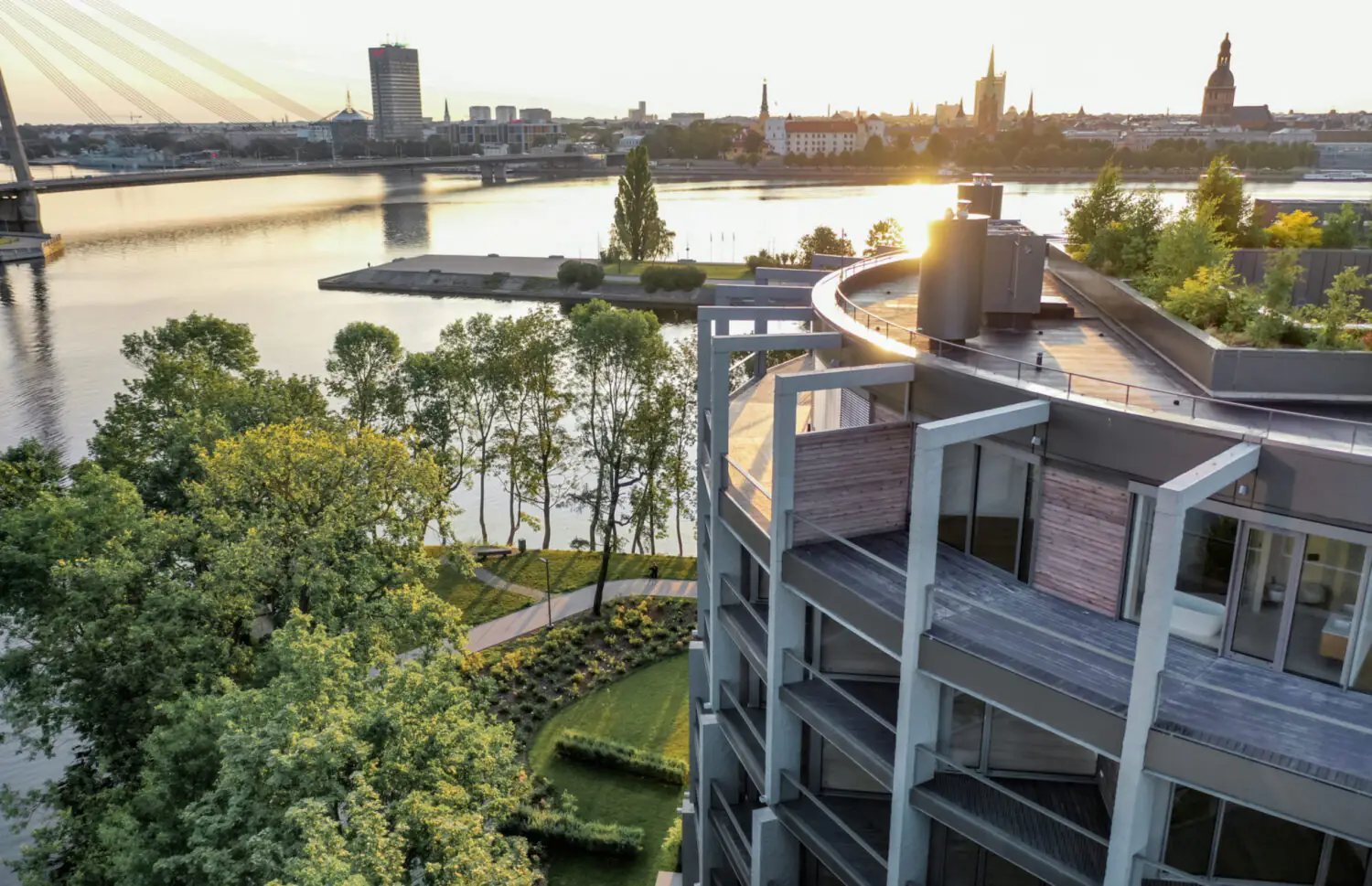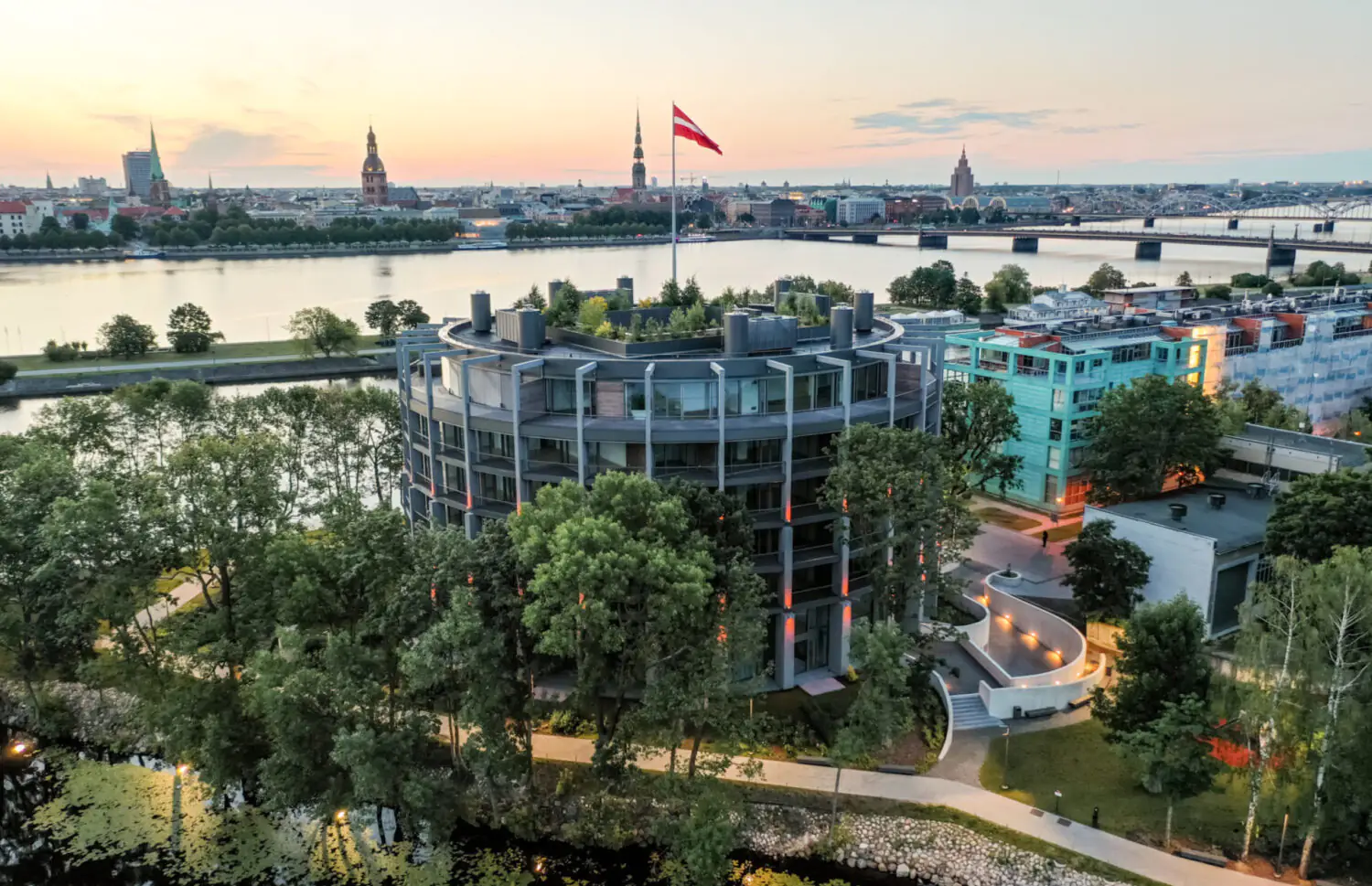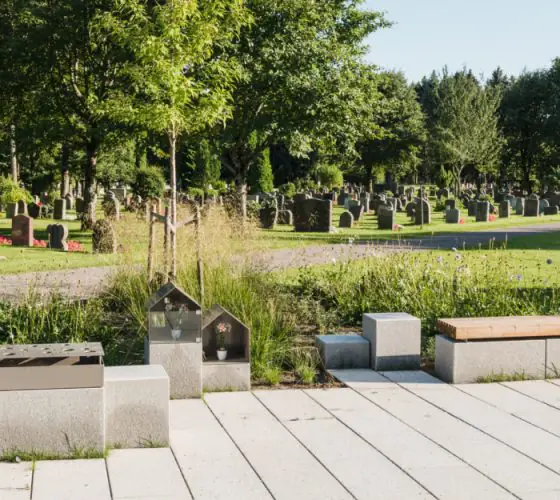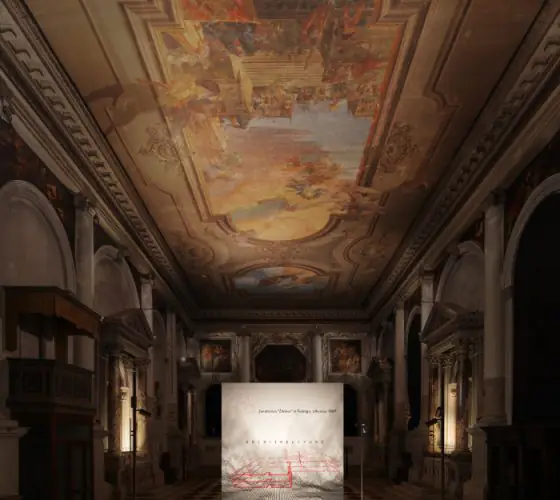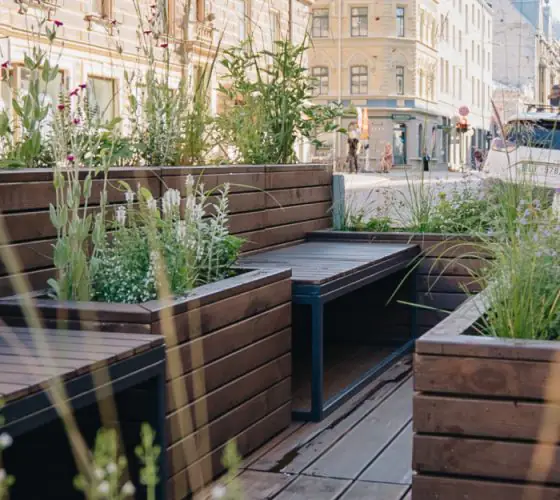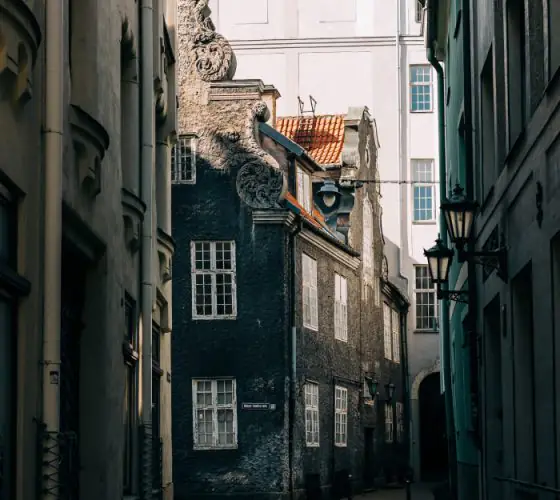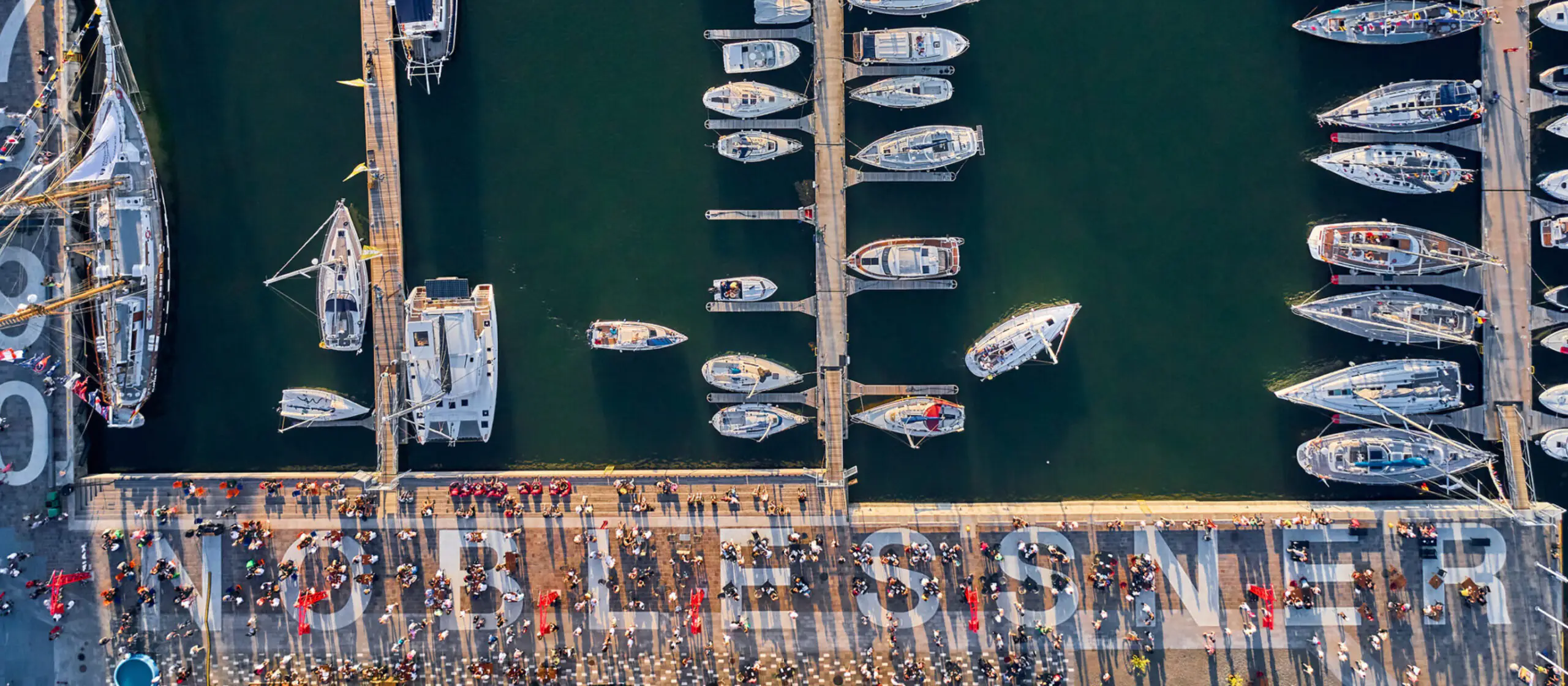
facebook.com/Noblessnerlinnak
Back in the day, the waterfront areas of the Baltic Sea were of great importance for industry and shipping, but later declined in significance, becoming neglected. Now, they are again looking forward to unlocking their potential, albeit from a different perspective. Baltic cities are rapidly improving numerous former port areas, shipyards, and overgrown river embankments. They are transforming these spaces into modern public areas with a variety of programs.
While many projects still exist only in the form of concepts, several implemented examples of successful coastal area development are already visible before our eyes. Riga is no exception: new projects for the urbanisation of waterfront areas are in development right now. Let’s examine six existing projects in Latvia, Lithuania, and Estonia to understand what local architects and urbanists will rely on in developing new solutions.
Noblessner Port
Location: Tallinn, Estonia
Developers: BLRT Grupp
Noblessner is a historical district in Tallinn, located on the shores of the Baltic Sea. In 1912, a shipyard was built here that produced ships for the Russian Imperial Navy — among other things, it housed a secret submarine factory. As happened with many industrial zones in cities on the Baltic Sea, the city grew and the former shipyard’s location is now a very attractive area near the city centre.
BLRT Grupp holding transformed the buildings into fashionable restaurants, clubs, venue spaces, galleries and even an augmented reality centre: an attractive programme that doesn’t lose the chic industrial appearance. Today, Noblessner has become one of the main cultural centres of Tallinn. The area is growing rapidly, and modern residential developments overlooking the Baltic sea are being designed around the perimeter of the former shipyard.
It is quite likely that the experience of Tallinn will become an important reference for future projects in Riga — as a city with a similar geography and a rich heritage of the industrial era, requiring rethinking and transformation.
Daugava Waterfront Promenade
Location: Riga, Latvia
Architects: Arplan + A plus Arhitekti
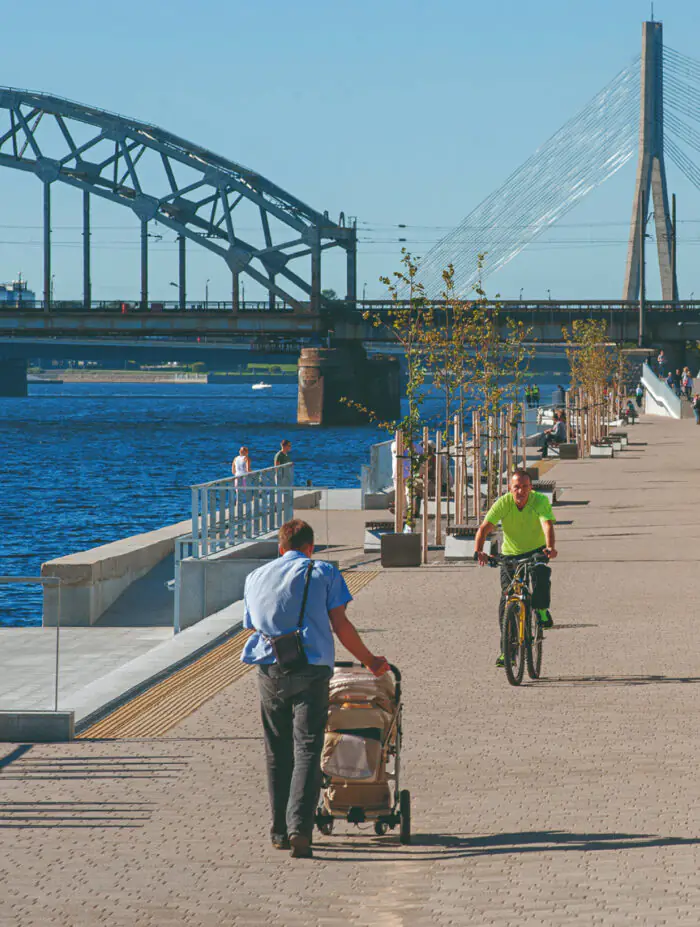
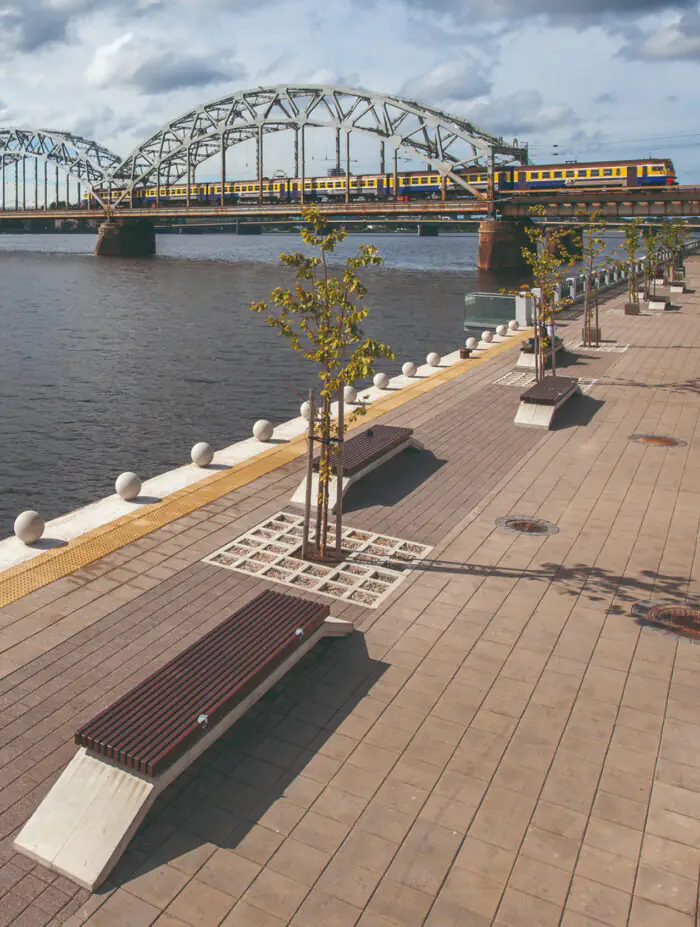
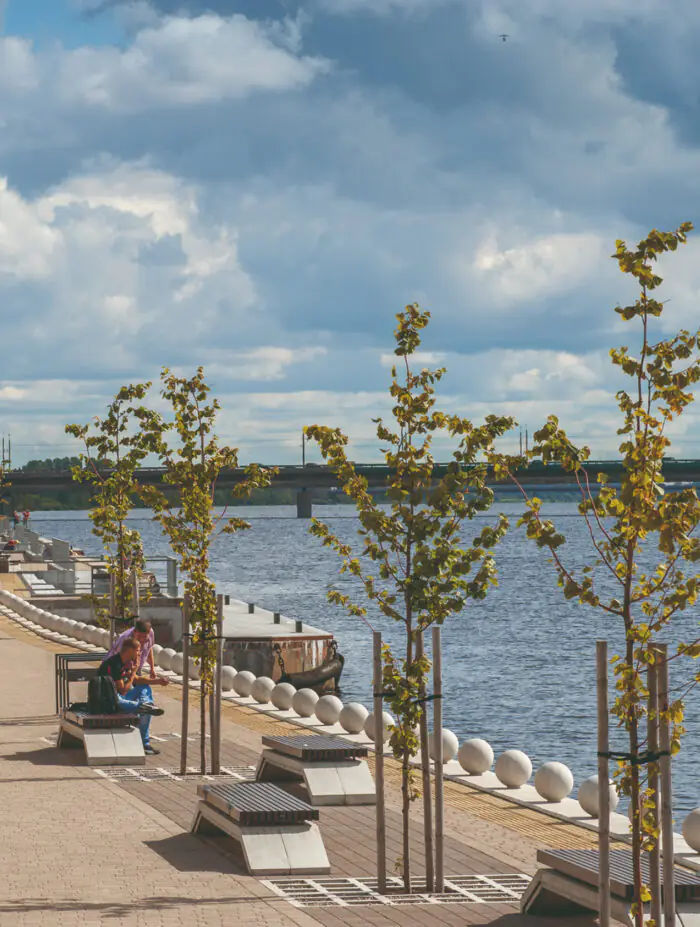
Historically, Spīķeri Square is a depot district with 58 warehouses from the 19th century, of which only 13 have survived. They were enough, however, to preserve the historical atmosphere. Arplan and A plus Architects developed a project for the transformation of Spikeri Square and the adjacent Daugava embankment. Carefully refurbished former warehouses now house cafes, restaurants, shops and offices, while the square in the centre hosts venues and markets.
The reconstruction included the restoration of the former pedestrian underpass connecting Spikeri with the Daugava embankment — this is how the project bridged the gap between the city and the bank.
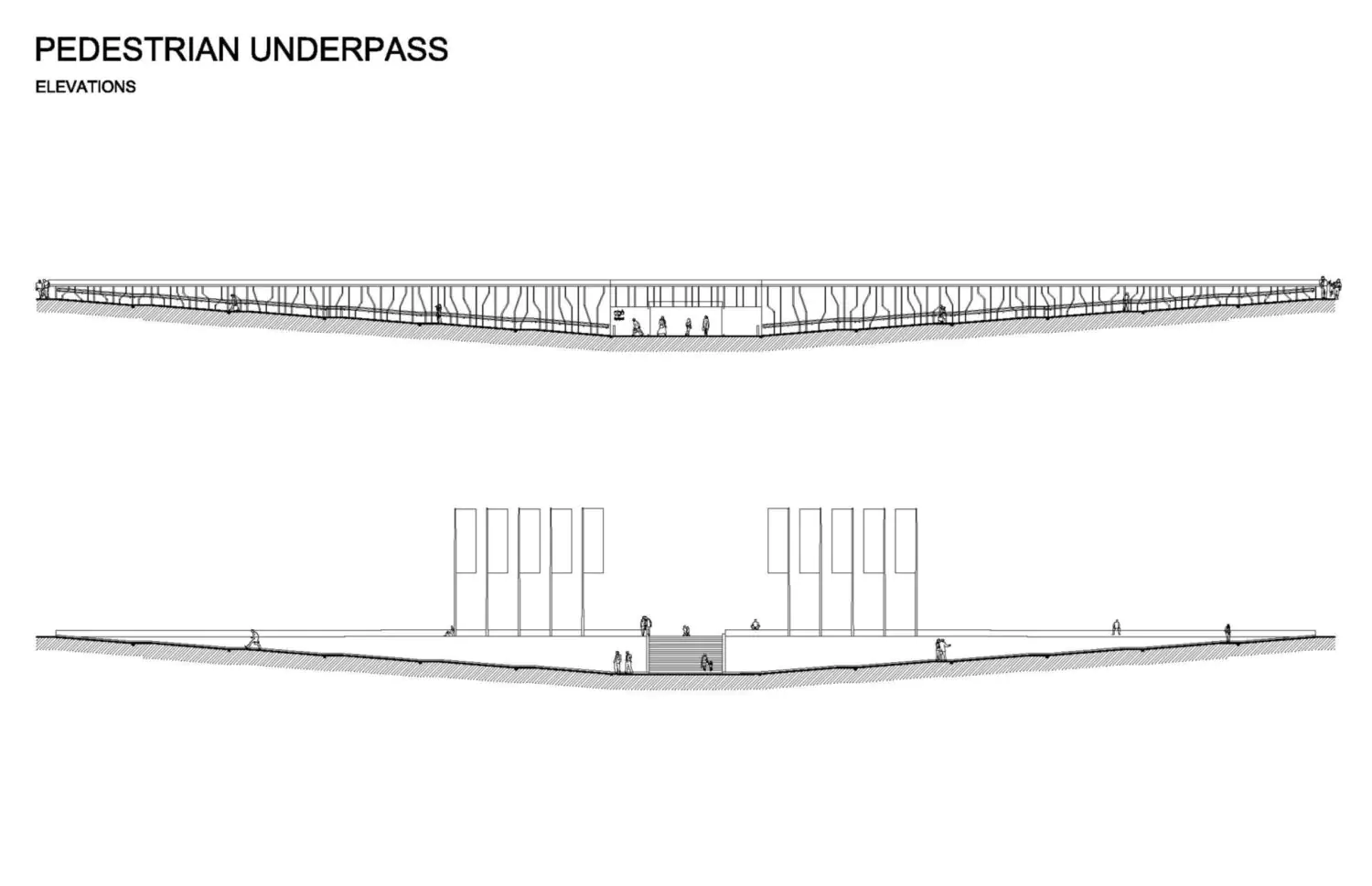
archdaily.com
The restored embankment, stretching for 1,6 km along Krasta iela, has acquired new recreation areas, bicycle paths, piers, observation points and a skate park. The entire project makes a point of creating a sustainable space by utilising local materials and techniques, implementing a drainage system for rainwater, and incorporating modern energy-efficient lighting.
An important feature of this project is its accessibility for people with reduced mobility.
Tallinn Cruise Terminal
Location: Tallinn, Estonia
Architects: Salto Architects, Stuudio Tallinn
The Сruise terminal in Tallinn Old Town is located on the north-western embankment of its port. This is an set of the 850-metre embankment itself and a long pavilion, on the lower floor of which there is a passenger service terminal, and the upper floor is reserved for open walking paths, a restaurant and amphitheatre-style seating for relaxing by the open water. In the future, public transport will stop here too.
The terminal is a multifunctional space: it welcomes cruise ship passengers four months a year, while for the remainder of the time, the building is available for exhibitions, concerts, and other public events.

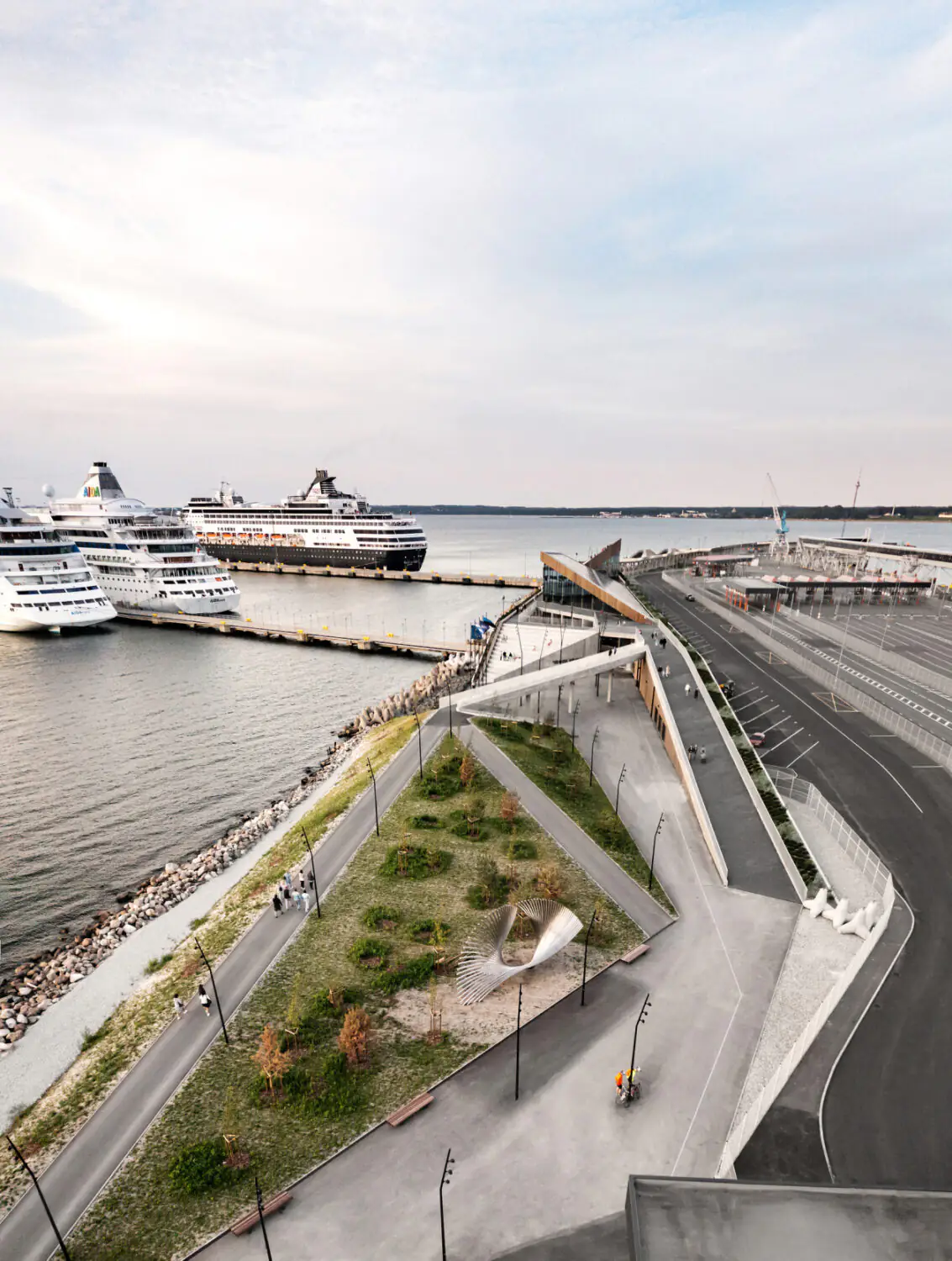
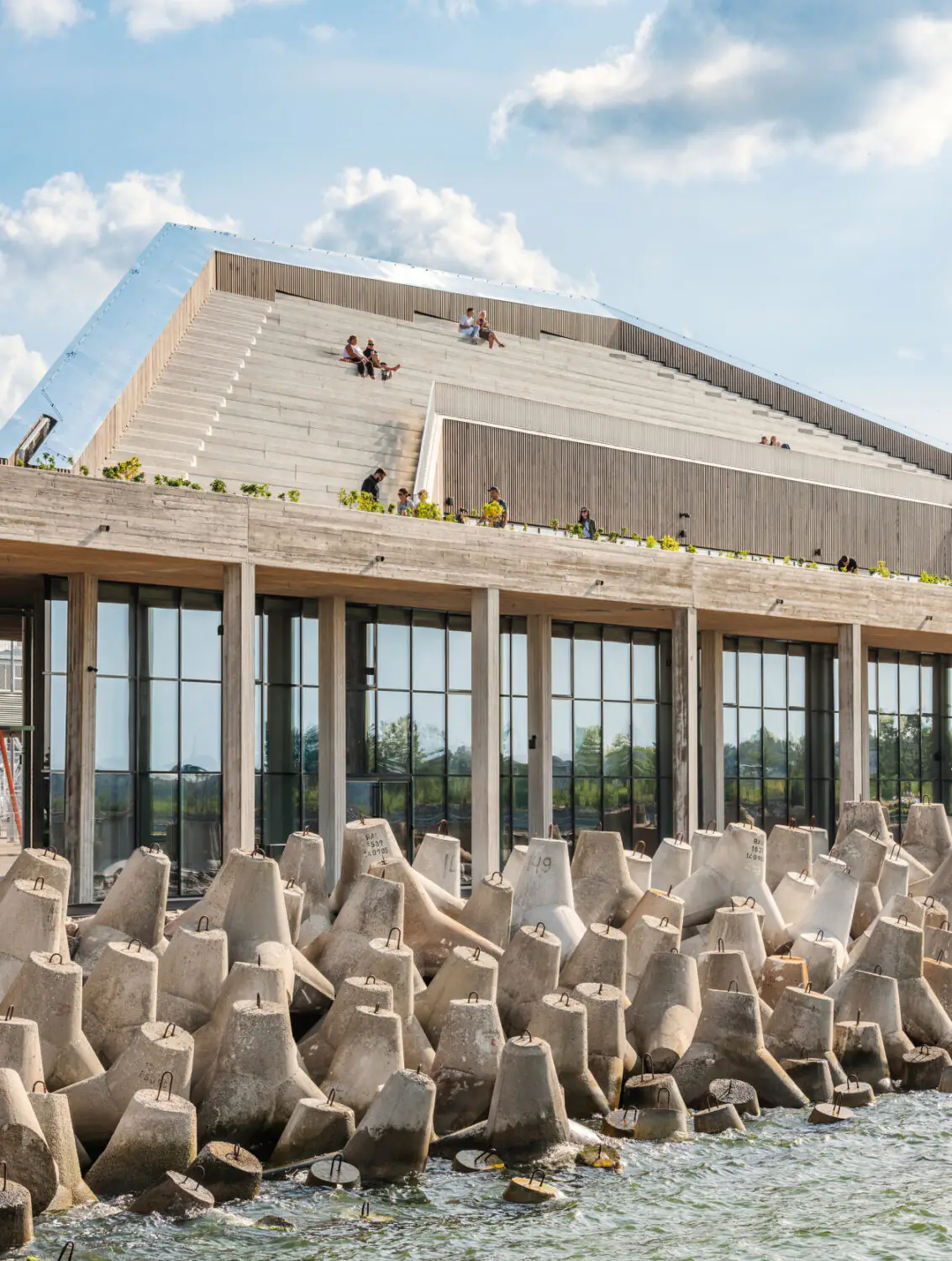
The transformation of the terminal is directly related to the development of this part of Tallinn: the Rotermann quarter is located very close – once an important industrial centre, and today a new fashionable area combining reconstructed industrial and modern architecture. We wrote about it in detail in a different article.
These two projects — the cruise terminal and Rotermanni — are strongly interconnected, mutually reinforcing and complementing each other: a modern embankment leads passengers arriving into Tallinn to the heart of the Old Town through Rotermanni.
Estonia is focusing on waterfront development not only in the capital, but also in other cities: other examples include the emerging Vanasadama quarter in Pärnu and a promenade in Sillamäe.
Ostas Street Promenade
Location: Ventspils, Latvia
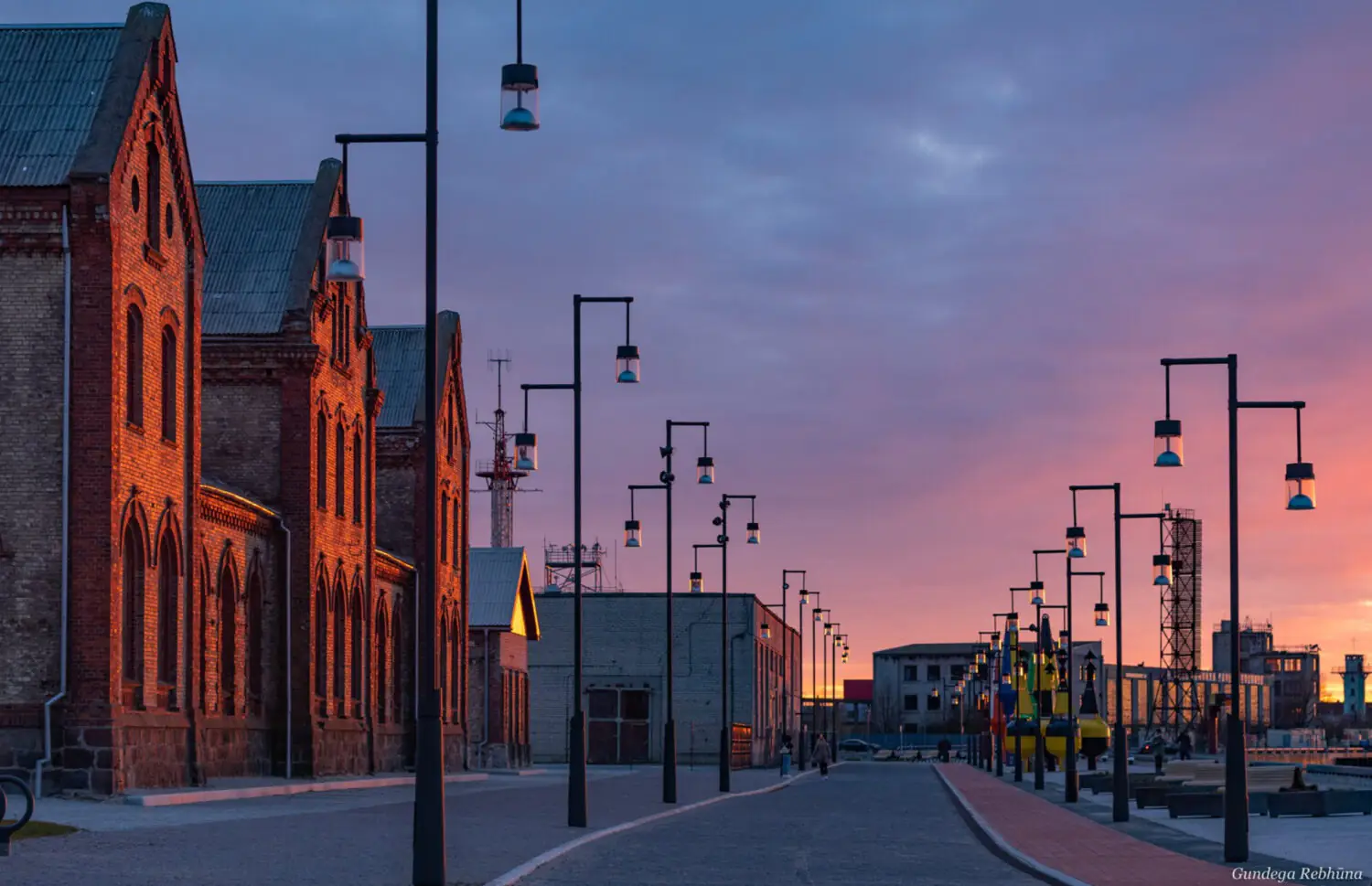
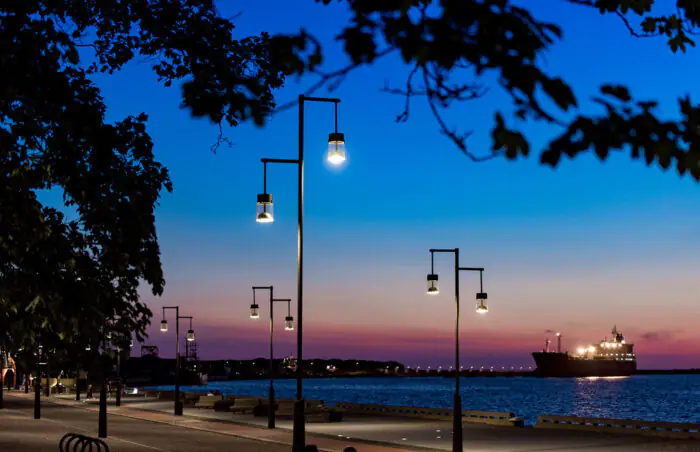
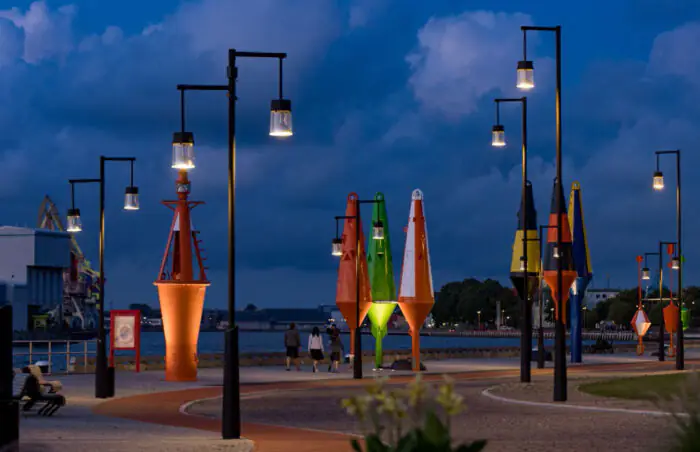
The promenade of Ostas Street (also called Ventmala) is located in the northern part of Ventspils near the port, in the area of former warehouses, and runs along the city’s numerous attractions. Starting in the mid-1990s, the embankment has been gradually reconstructed. Careful landscaping and green islands, contemporary art and outdoor sculpture exhibitions, generous lighting, paved sidewalks and bike lanes are examples of simple, budget-friendly and functional landscaping.
Like attracts like: in 2023, reconstruction projects worth more than 19 million euros were launched on the neighbouring embankments of Ventspils. Ostas Street Promenade is a representative case of how small improvement projects can become catalysts for larger urban change.
Dange River Embankment
Location: Klaipėda, Lithuania
This is not a single project, but rather a series of neighbouring urban transformations. On the pedestrian bank of the Dange River in Klaipeda, several modern buildings with terraces and summer cafes opening towards the river appeared. At the same time, the embankment itself underwent a thorough renovation, including newly installed city benches and even a small park. All these elements work together and form a coherent public space in the historical centre of the city. Regeneration projects of this scale would benefit both banks of the Daugava.
Klaipeda is also planning larger-scale waterfront development projects funded by the European Union: for example, a public space on the Curonian Lagoon and an embankment near the Castle Pier.
River Breeze Residence
Location: Riga, Latvia
Architects: DIDRIHSONS UN DIDRIHSONS
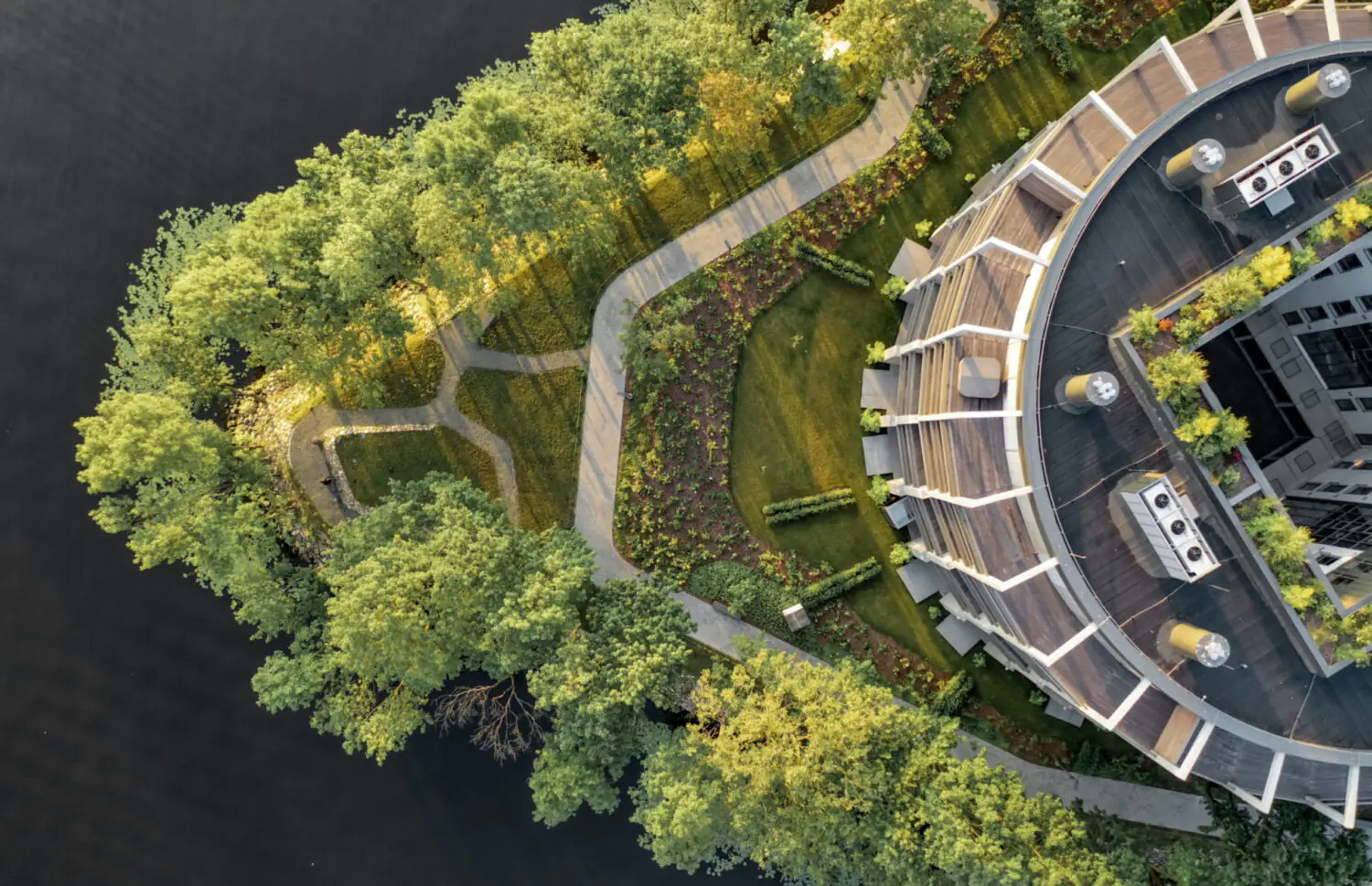
This project differs from previous examples. The residential complex River Breeze Residence in the centre of Riga, commissioned in 2018, consists of 44 apartments in a unique location, surrounded by the Daugava River and its bay.
In addition to private terraces for residents, the project’s landscape architects designed a public park. All existing trees along the water were preserved and a simple but pleasant promenade was created around them. The transformation of the riverfront into a landscaped park along the water was not the primary goal of this commercial project: it emerged almost as a side effect. Its positive impact, however, is difficult to underestimate. This is an example of how private projects for private customers offer landscaping not only for the residents, but also for other citizens.
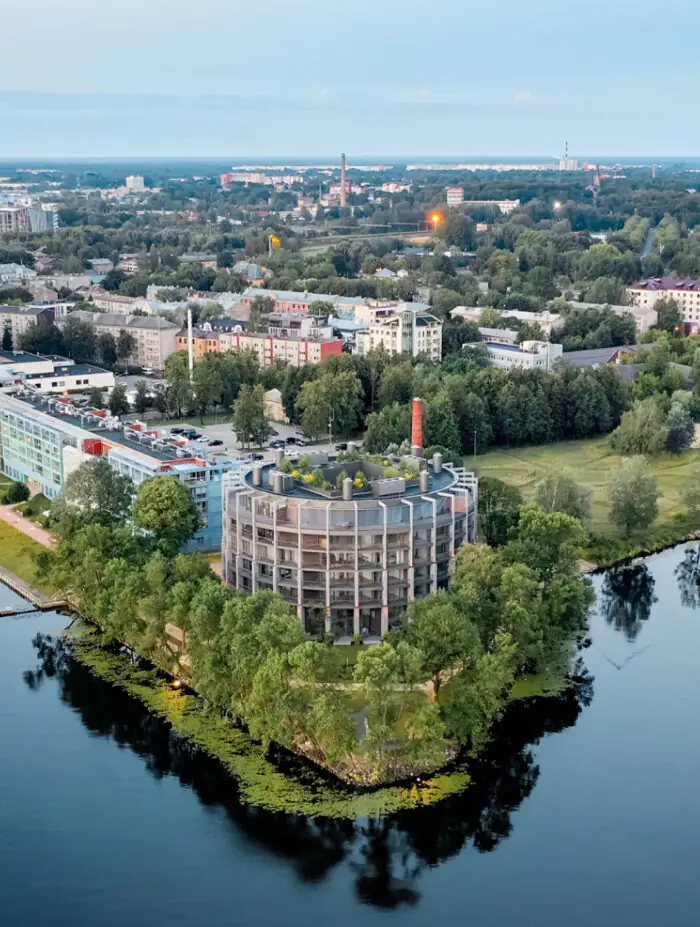
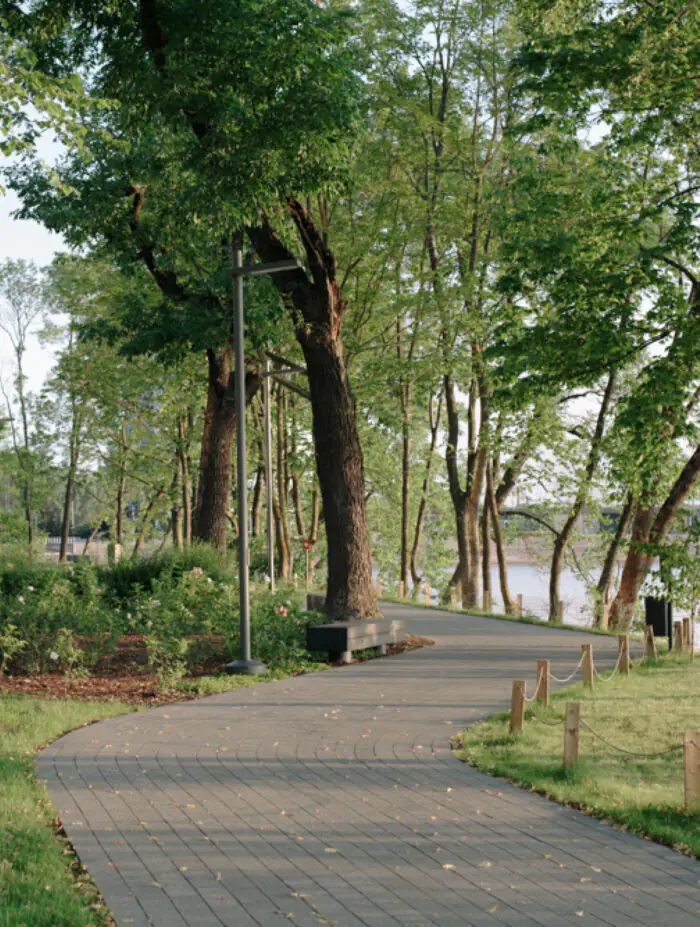
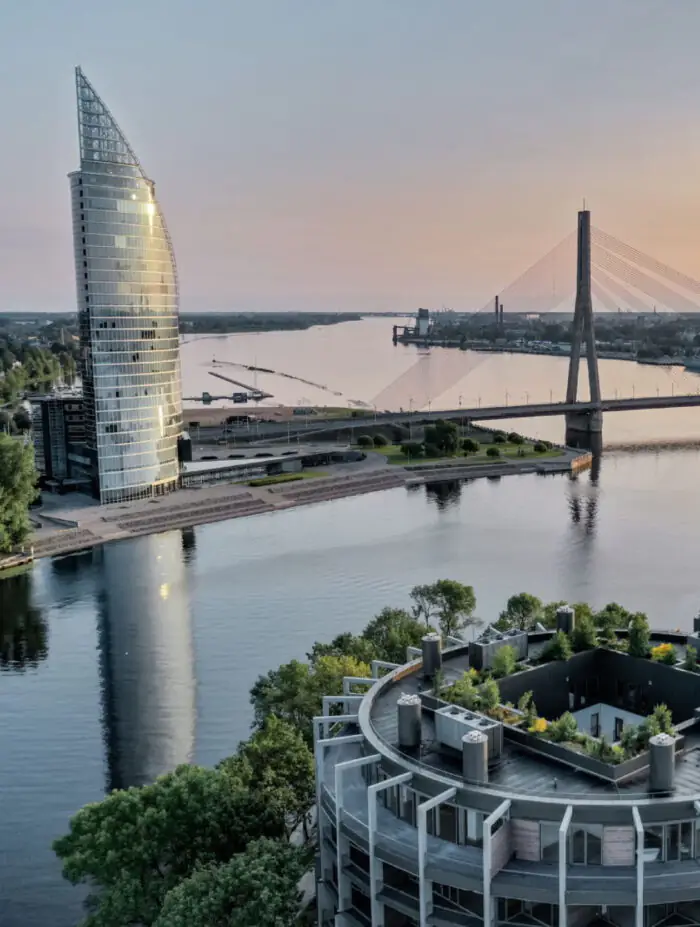
Many other ambitious projects on the shores of the Baltic are still at the stage of development and pre-project studies. It is likely that in their development, the Baltic cities will also be guided by the examples of other neighbours, like Scandinavia and Central Europe.
The common denominator of all the cases considered is the accessibility of embankments for different social groups, the preservation of historical buildings and the cultural landscape, the creation and strengthening of connections between the waterfront and the rest of the urban fabric. It doesn’t matter whether Riga will find inspiration in bright and large-scale projects of Baltic capitals or in small but meticulous interventions in small towns: either way infrastructural connectivity and attentiveness to the local context will be key in the approach to waterfront transformations. In any case, projects in the city will work and be effective if they take into account the climate (like sub-zero temperatures and short daylight hours), the needs of citizens with different physical and economic capabilities as well as the culture and history of the place where the development is taking place.


